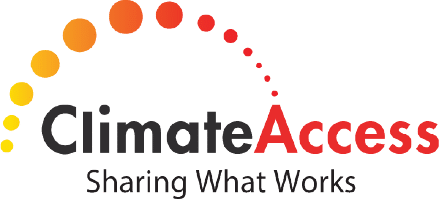At Climate Access, we intend to turn more time and attention to reviewing outreach efforts and determining best practices. It was in that vein that I caught up with Dr. Jennifer Hirsch last month to talk about her work on developing the Chicago Community Climate Action Toolkit out of The Field Museum.
The aim of the Toolkit is to address the fact that although many Chicago residents accept the existence of climate change, they largely do not connect it to their own lives—a very common challenge with the American public. The Toolkit has done an excellent job of providing a diverse range of residents of the city with tangible ways to engage in sustainability efforts that reflected their values and cultural traditions. It is based on ethnographic research within nine communities as well as input from more than 40 organizations. While the research team was interdisciplinary, the approach was an anthropological one given the connection to the Field Museum. As Hirsch explained to me, ethnography involves looking at what people care about and what they are currently doing. This knowledge can be used to develop strategies that leverage these beliefs and behaviors.
The Toolkit offers advice on how to start a climate action project and provides examples of what is happening on the ground in four communities—an essential ingredient in building a sense of efficacy. What I find interesting about the project is how it frames the climate models and benefits of taking action. It starts with the assumption that people are concerned about and connected to the natural world and it is just a matter of tapping into these embedded relationships. The Toolkit’s project models focus on what people want out of efforts to address climate, not on reduction targets and timelines.
So, what do people want? According to Hirsch’s research, Chicago residents care about economic development options, community gardens, and efforts to promote youth leadership. As a result, climate actions found in the toolkit are focused on and tied to serving these objectives. For example, there is an emphasis on how the creation of community gardens creates safe and clean places for kids to spend time and learn outside, beautifies vacant lots, and creates a space that brings neighbors together.
Evaluating the success of the program was based on looking at the uptake of climate action behaviors by the residents involved in the participating community organizations. In particular, Hirsch and her team were looking at whether or not climate action programs were integrated into and producing benefits for existing community outreach programs (i.e. a green economy project led to funding for a green roof), whether the climate action met another community need (i.e. contributed to better nutrition), and whether the programs were engaging a diverse range of stakeholders and building the social capital for further action. In the short term, the program has delivered results but whether action will be sustained over time has yet to be tested. In the meantime, the Chicago Community Climate Action Toolkit as it stands does provide practitioners with an example of a fresh, human focused approach. Placing people in the heart of the challenge and as a key part of the solution is critical for motivating public support for climate programs.
For more about Jennifer Hirsch and her work, see her featured member profile. Also, check out the Chicago Community Climate Action Toolkit’s booklet, Climate Change in the Windy City and the World.
Photo of the Bronzeville community garden mural from the Chicago Communicty Climate Action Toolkit

